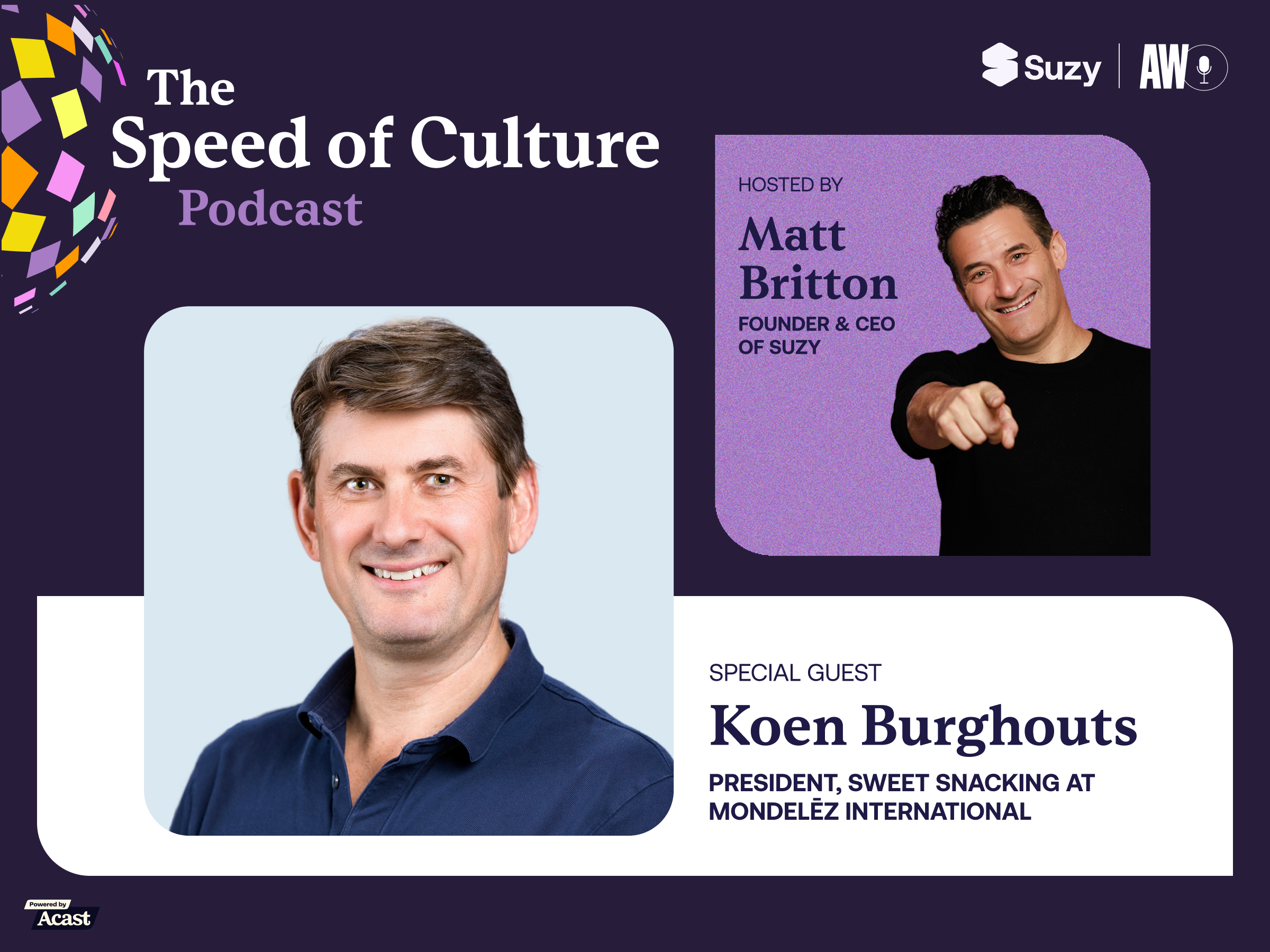Every new year comes with new resolutions—and new wellness trends. More often than not consumers have ambitious (or overly ambitious) goals for health and wellness, and they often expect brands to help them reach these lofty ideals. And wellness goals are also holistic, encompassing not just physical health, but also mental, emotional, and social. As a former high school and college athlete, I know that focusing on wellness is critical. If I can be my best self then I can channel that to my friends and family, co-workers, and anyone that comes into my life.
But as we know, it’s not always easy to keep the goals we set at the start of every year, and it can be difficult for brands to keep up with consumer preferences, attitudes, and behaviors. As many of us continue to adapt to the inflationary times, high prices of groceries, and hybrid work models, it’s no surprise that new trends in health, wellness, fitness, and dieting continue to emerge, especially when wellness is increasingly multidimensional.
In preparation for 2024, Suzy dove deep to uncover the data behind emerging wellness trends and explore which ones are here to stay.
Here are five wellness trends we’ve found to be on the upswing as we enter the new year:
Trend 1: Wellness At-Home
A holdover from the pandemic where people spent more time at home, consumers are investing in at-home wellness products more than ever before. The wellness trend impacts multiple industries as consumers orient wellness activities around their homes, ordering DTC meal kits and creating at-home gyms. Some, according to Forbes, are even incorporating higher-end products such as steam rooms and saunas into their homes, creating personal spas.
CPG products can also do this for consumers, offering spa-level care with the ease and savings of doing it at home. In a recent Suzy survey, half of the consumers we surveyed said they use at-home spa treatment products at least occasionally, citing convenience (68%) and price (51%) as the main factors for doing so. They also don’t feel like they’re compromising on quality, with about half (49%) agreeing that at-home spa treatments can be just as effective as professional ones.
For brands, it may mean simply reenvisioning your products and adapting marketing messaging to align with this consumer wellness trend. With wellness becoming more holistic, there is room for creativity and exploring how your products and services can meet the at-home wellness demand.
Trend 2: Personalized Wellness
Personalization isn’t a new concept, but as customization becomes table stakes, more consumers are demanding and seeking out options that “speak to them”. There’s an increased desire for consumers to seek out products that align with their wellness goals or dietary preferences. 28% of consumers are doing this “frequently” while 16% of consumers do it “every single time”. And, consumers are willing to spend. More than half (52%) are willing to pay a premium for F&B products tailored to their specific dietary and wellness needs. Again, younger consumers are especially interested in this concept, particularly Millennials aged 25-34, among whom 65% said they would pay extra.
Personalized wellness can come in all different forms. From direct-to-consumer vitamin kits like Ritual and Care/of to personalized shampoo formulas from brands like Prose, there are plenty of opportunities for brands to offer personalization. But CPG and beauty are not the only industries that can capitalize on the demand for unique products. According to BCC Research, the global market for fitness apps is expected to increase from $15 billion in 2022 to $34.3 billion by 2027. Since people are working out at home in such big numbers, they are looking for technology to take on the role of a virtual trainer. Personalization from apps is in big demand, according to Suzy’s own research. And 79% of respondents to our survey indicated that they would be willing to exchange their data in exchange for personalized wellness insights.
Another major area for personalized wellness lies within finance. As Gen Z and Millennials start to save for retirement in bigger numbers, we’re seeing a need for financial services technology to educate them on the best way to keep and grow their savings. For example, there’s a trend currently going around on TikTok of creators advising people what to do with the money they’ve put in their Roth IRAs. There’s an opportunity for brands to become personalized partners with consumers via this technology.
Now is a great time to segment your target consumers, and discover what drives them to buy. With this knowledge, you can make products feel more personalized to your audience.
Trend 3: Body Positivity in the Age of Ozempic
The topic of Ozempic and the glucagon-like peptide-1 (GLP-1) receptor agonist drugs have skyrocketed over the past years. And the impact that it is having on culture, body positivity, and brands is extremely complex.
Over the past two decades, the concept of body positivity has undergone a transformative journey in culture. From the early 2000s, societal attitudes toward body image have evolved, challenging traditional beauty standards and promoting inclusivity. This period has witnessed a surge in body-positive movements, activism, and a growing acknowledgment of diverse body types, contributing to a more accepting and empowering cultural landscape. Many brands have helped drive this, including Dove whose “Real Beauty” campaign launched in 2004 and is still in-market at the onset of 2024.
So how is this new wave of drugs changing body positivity? For now, it doesn’t seem like it is having a major impact on society, but it could be too early to tell. Only 34% of consumers that we surveyed are familiar with medications like semaglutide (Ozempic) and only 12% have taken medication like Ozempic for weight management or health. We found that when it comes to their health, consumers said they prefer exercising (39%) and modifying their diet (30%). Still, brands should plan on testing their messaging to ensure that it still resonates with consumers.
Trend 4: The Role of Social Media and Influencers in Wellness
With the prevalence of social media in so many people’s lives the role of influencers in wellness is becoming significant. Influencers are used by brands for information dissemination and as a means to drive product awareness, adoption, and endorsement, to drive inspiration and motivation, to encourage community building, and to encourage physical and mental health advocacy.
In our research, we found that while 29% of consumers frequently compare their body or appearance to celebrities or influencers they encounter in the media, a significant majority of 60% do so infrequently.
55% of consumers would be interested in a subscription-based service that offers exclusive workout content from influencers and celebrities, and 74% would be interested in guided meditations led by celebrities or influencers. These results are not very surprising given the rise of workout influencers such as Peloton and SoulCycle instructors. We also saw that the pandemic has made it more acceptable to talk about mental health. It has also reduced the stigma surrounding mental health, which has made people more comfortable getting support.
Curious about influencer marketing and how to maximize its potential? Sign up for our newsletter today—we have a comprehensive report on all things influencers dropping in March.
Trend 5: The Anti-Tech Wellness Movement
Finally, the anti-tech wellness movement is on the rise. It appears to be the antithesis of what we’ve seen with wearable tech—the desire to log off entirely. Embracing a “slow living” lifestyle doesn’t mean that consumers want to turn their backs on brands and tech entirely, but instead, they are looking for brands to support them when it’s time to slow down. Slow living is especially important to Gen Z—over 40% of 18-24-year-olds take technology breaks daily.
Our research showed that 87% of consumers are influenced by brands that embrace the slow living lifestyle and 84% of consumers are likely to purchase tech products with slow living features. The features we’re talking about include products that can go into grayscale mode and make tech easier on their eyes. Some include screen time or downtime monitors that suggest when it’s time to take a break.
So, while the trend may be called “anti-tech”, it’s more along the lines of how consumers can use tech to help them manage their technology use to benefit their health. For example, wellness apps like Headspace and Calm encourage users to embrace mindfulness and meditation. These wellness apps provide guided meditation sessions, sleep stories, and other features that promote mental well-being and a break from the fast-paced digital world. While consumers are being present, they’re still tapping into technology to help them get there.
Or, take Unplugged for example This brand creates physical products to help individuals disconnect from digital devices, including phone beds, or charging stations designed to keep phones away during certain hours, promoting quality time without constant digital distractions.
Brands may simply need to offer new features on their apps or other devices to help consumers unplug. Or they can provide other resources, like guides or challenges, to motivate consumers to unplug.
Looking Forward: Consumers and Wellness Trends
If we’ve learned anything it’s that consumer behaviors will continue to change as our world adapts to unforeseen challenges ahead. And new wellness trends will come on the heels of these behavior changes.
Brands need to keep up with these constant changes. After all, though our data is run to a gen-pop audience, your specific consumers may have their own unique wellness trends. Suzy is here to provide the real-time insights your brand needs to make the best (and healthiest) decisions possible—now more than ever before. We are constantly looking at how consumers feel, what behavior changes are occurring, and how it is impacting various industries and brands within the world of health and wellness.
Catch all our insights about wellness and get a comprehensive look at this meta trend defining consumer behavior in 2024.
.webp)






.png)
